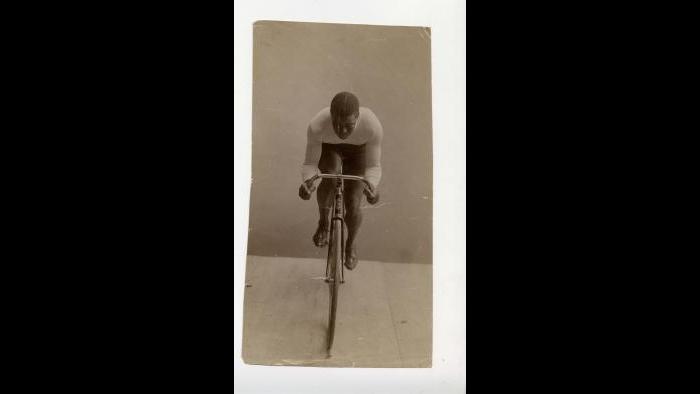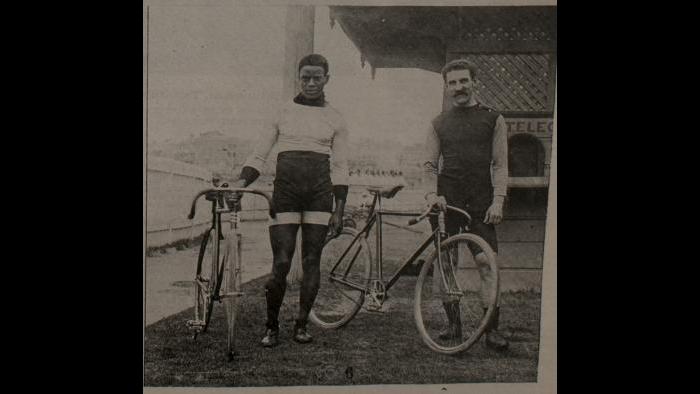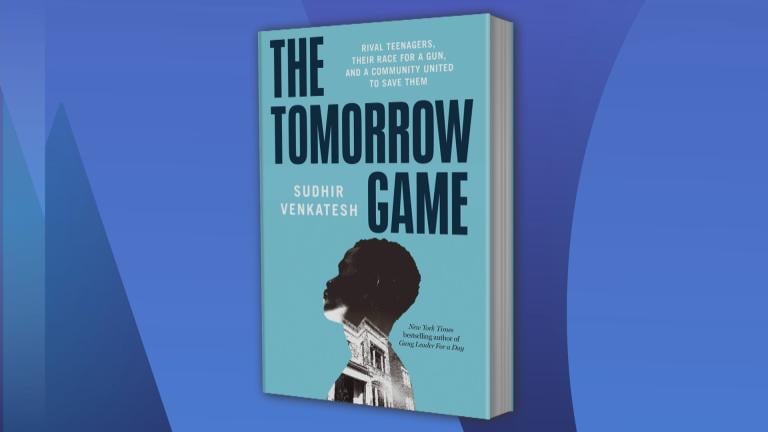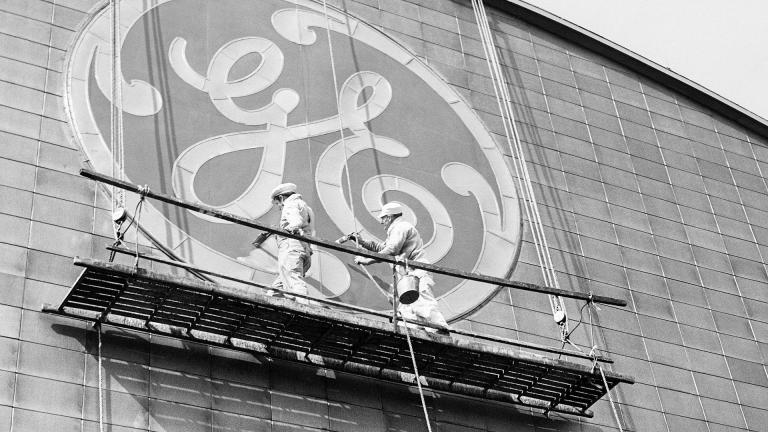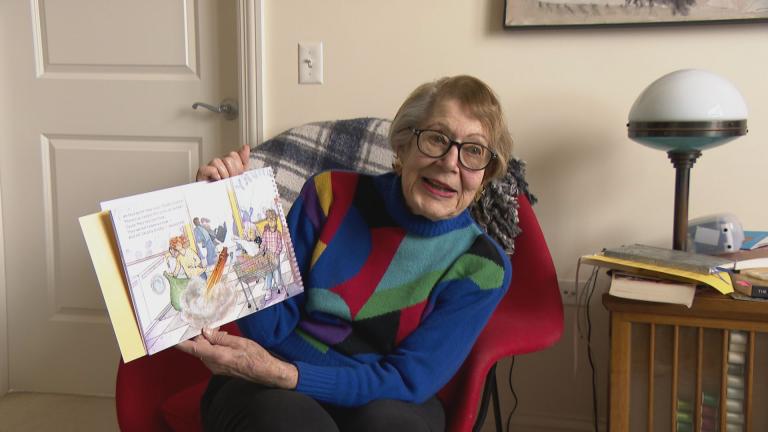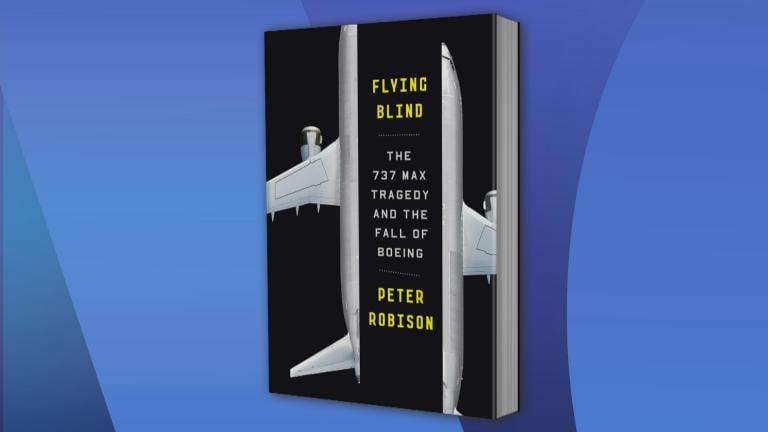Before Jackie Robinson broke the color barrier in Major League Baseball and Jack Johnson became the first black heavyweight champion, there was Marshall “Major” Taylor.
Taylor was the world’s fastest athlete at the turn of the 20th century in a sport for which the wheels were just beginning to turn in the U.S.: cycling. But despite his strength and speed, he faced extreme racism to compete at a time when Jim Crow restrictions ran high in American society.
Michael Kranish, an investigative political reporter for the Washington Post, chronicles Taylor’s story in the new book “The World’s Fastest Man: The Extraordinary Life of Cyclist Major Taylor, America’s First Black Sports Hero.”
“He really was a civil rights icon for his day,” Kranish said. “He wrote extensively about racing not just for his glory. He wanted to show that if he could win a fair match against whites, that any black could compete and triumph whatever field they tried, if they were given a fair shot.”
Kranish joins us in discussion. Below, an excerpt from “The World’s Fastest Man.”
PROLOGUE
Madison Square Garden, 1896
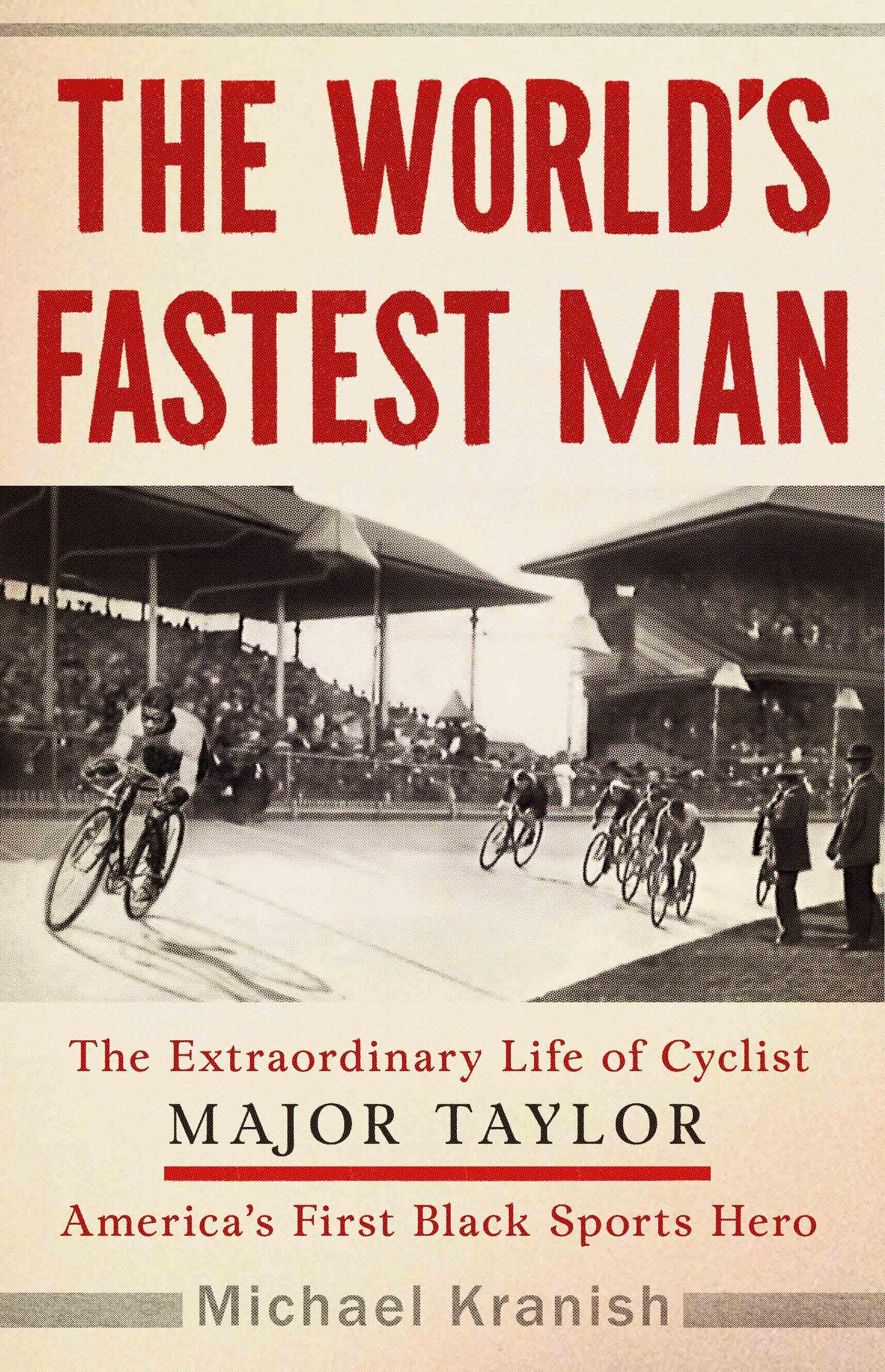 On the clear, brisk Saturday afternoon of December 5, 1896, an unusual pair of men strode to New York City’s Madison Square Garden, where thousands would soon assemble for one of the era’s greatest sporting events. The first man, Louis de Franklin Munger, was a lissome figure, with a hawkish gaze, a bristle-thick mustache, and close-cropped hair parted at the apex of his forehead. Munger had once been crowned the world’s fastest man and now, at the age of thirty-three, his championship days behind him, he was still widely recognized by an admiring public. Everyone called him “Birdie,” an appellation that evoked his love of speed and freedom. Now he had new ambitions. The second man, just eighteen years old, was described somewhat mysteriously in press accounts as Munger’s “valet.” He seemed at first glance a short, slight figure, but a close look revealed a compact body with remarkably muscular legs.
On the clear, brisk Saturday afternoon of December 5, 1896, an unusual pair of men strode to New York City’s Madison Square Garden, where thousands would soon assemble for one of the era’s greatest sporting events. The first man, Louis de Franklin Munger, was a lissome figure, with a hawkish gaze, a bristle-thick mustache, and close-cropped hair parted at the apex of his forehead. Munger had once been crowned the world’s fastest man and now, at the age of thirty-three, his championship days behind him, he was still widely recognized by an admiring public. Everyone called him “Birdie,” an appellation that evoked his love of speed and freedom. Now he had new ambitions. The second man, just eighteen years old, was described somewhat mysteriously in press accounts as Munger’s “valet.” He seemed at first glance a short, slight figure, but a close look revealed a compact body with remarkably muscular legs.
As the pair approached Madison Avenue and 26th Street, the arena—the second of what would be several iterations of Madison Square Garden—came into view. The structure was one of the city’s greatest architectural confections, designed by the legendary Stanford White, whose firm was responsible for many of the Gilded Age mansions that lined the most fashionable streets of Manhattan. The Garden’s Moorish arches marched down the avenue; a succession of teardrop-shaped cupolas ringed a fifth-story roof garden. High above, an Italianate tower concealed a private apartment and climbed another three hundred feet into the sky. Atop it all, an Augustus Saint-Gaudens sculpture of Diana, a twelve-foot-tall unclothed gilded figure aiming a bow and arrow at the winds, proclaimed to all who could see her from miles around that this was the grandest public palace in America.
Munger and his young friend arrived early, before most of the spectators would stream through the Garden’s granite pillars and into the marbled, mosaic entryway. Inside, parquet boards had been laid to create a bicycle-racing oval. More than nine thousand people could be squeezed into the galleries around the track, with standing room for several thousand more. A sliding glass roof opened for ventilation. Within hours, the crowds gathered, and the Garden buzzed with excited murmurs. At eight p.m., a group of racers assembled on the oval and mounted their bicycles. The twenty-five-foot-wide track was sharply curved and steeply banked to a degree that some riders deemed too dangerous. Workmen had applied a coating to the track that failed to cure evenly, leaving it slippery. The crowd noise reached a low roar as the racers readied. One of those at the starting line stood out. It was the teenager who had been called Munger’s “valet.”
Munger had been a legendary figure at the dawn of cycling, winning world records on a high-wheeler, which typically featured a large, solid wheel in the front and a small one in back. As his career faded in the early 1890s, a new type of bicycle had become wildly popular, with two equal-sized wheels and air-filled tubes. Munger had also raced the early, heavy versions of those models, and he now was in a contest to build the world’s lightest, fastest “safety” cycles, as the new bikes were called.
Indeed, Munger had appeared in this arena earlier in the year touting his bicycles as the world’s best. Tens of thousands of New Yorkers viewed the wares of hundreds of exhibiters, marveling at the latest racing cycle, or a $5,000 showpiece festooned with diamonds, or an Army-designed model bristling with weaponry. The age of the automobile was more than a decade away. This was the time of the “silent steed,” ballyhooed as a replacement for the horse. One of every three patents in the 1890s was related to bicycle manufacture, and more than one million new bikes were expected to be sold in this boom year of 1896. The country had 30,000 bicycle shops and 250 bicycle factories. The main sports of the day were baseball, boxing, and bicycle racing—and cycling was by far the most popular.
Now, as the great annual race began at Madison Square Garden, the crowd focused on Munger’s companion standing on the starting line with a lightweight, state-of-the-art bicycle. The protégé was unlike any racer the spectators had seen before at Madison Square Garden. He was a black man. Not just black, the press reported, but “ebony,” “a veritable black diamond,” “the black meteor.” Those were the kind descriptions. He was housed and sponsored by the South Brooklyn Wheelmen, which called him the “dark secret of Gowanus,” a reference to the Brooklyn neighborhood of brick industrial buildings where he began his training routes with the club’s riders.
The crowd buzzed as they realized they were about to witness a race of white versus black. At stake was much more than a bicycling victory; there was also the prevalent notion among whites that their race was superior. On one side of this contest was a clutch of the world’s most experienced racers, all of them white. On the other was the little-known eighteen-year-old who had come to this unlikely moment under Birdie’s wing.
His name was Marshall Taylor, known as “Major.” The son of a soldier who had fought for the Union in the Civil War, Taylor had raced in amateur competitions but nothing like the vaunted venue of Madison Square Garden. This would be Taylor’s professional racing debut. Logic might have dictated such a start should take place out of the spotlight, but Munger had suggested Taylor’s professional career would begin at the top on this great stage. There was a band on hand, as usual, and the members looked through their sheaves of music for “Dixie,” known as the unofficial anthem of the Confederacy.
How remarkable that Major Taylor was there at all. Six months earlier, in May 1896, the US Supreme Court had decided Plessy v. Ferguson, the case of Homer Plessy of Louisiana, who was determined to be seven-eighths Caucasian and one-eighth African, and had sought to ride in the first-class compartment of the East Louisiana Railroad. When he refused a detective’s request to move to a blacks-only car, he was arrested for violating the 1890 Separate Car Act, which mandated that blacks and whites ride separately. The Supreme Court upheld the action on grounds that the cars were separate but equal. The ruling effectively accelerated the already heinous racism of the post–Civil War era, institutionalizing Jim Crow laws for decades to come. Only one justice, John Marshall Harlan, dissented, saying “It cannot be justified upon any legal grounds.”
One month after Plessy and five months before Taylor arrived at Madison Square Garden, William Jennings Bryan stood in the same arena and accepted the Democratic presidential nomination, saying, “We believe, as asserted in the Declaration of Independence, that all men are created equal.” Bryan, who nonetheless supported some segregationist policies to woo Southern voters, lost to William McKinley, a former Union officer who would do little to stop the growth of the Jim Crow era.
If the world of sports had its own great dissenter amid this climate of racism, however, it was Munger. He bet his reputation that Taylor could, while riding a Munger-built bicycle, disprove those who believed that blacks were inferior and deserved segregation. Thus the symbolism represented by the starting line was extraordinary. A black man would compete with whites at Madison Square Garden, and may the best racer win.
Taylor wore skintight, woolen racing shorts and a shirt as he pushed his bike to the starting line. He was a son of two worlds: raised first by his poor family of black farmers, then taken in and tutored by a wealthy white family. He was better educated than most of his competitors, despite the insults hurled against him. He aimed to beat them not just with speed, but with knowledge, tactics, and cunning.
The curtain raiser was a series of half-mile races, each five laps around the track. In every heat, the improperly treated surface caused racers to fall or go flying over the handlebars, but they would reappear in the next heat, “legs and arms swathed up in bandages.” The crowd cheered wildly as the racers who remained on their wheels dodged their fallen competitors.
Taylor made his debut in the third heat. Riding a bicycle made by Munger, he bolted from the starting line and gained ground with every lap. He won easily to qualify for the final heat, pitting him against several of the world’s fastest riders. A starter’s pistol fired. Taylor’s powerful legs turned the pedals. Quickly, he put ten yards between him and his closest competitor. “Round and round the track whirled the colored rider, pedaling away like a steam engine,” wrote the Brooklyn Eagle’s correspondent. Taylor swiveled his head to see a racer named Eddie “Cannon” Bald—considered one of the world’s fastest sprinters—closing in. Bald was “straining every nerve” to catch Taylor. The crowd surged from their seats to see if Taylor could hold on to his narrowing lead.
In time, the rivalry between Bald and Taylor would be billed by a promoter as the white “Adonis” versus the “great Negro.” Bald would swear that he never wanted to “let a nigger beat” him, while Taylor saw Bald as the embodiment of the racism against him. Their rivalry would serve as a microcosm of the greater social history of the time, and come to an extraordinary conclusion for both men.
Taylor’s epic journey began twelve years before Jack Johnson, a black man, became heavyweight champion, and fifty years before Jackie Robinson broke the color barrier in Major League Baseball. Yet here he was in 1896, wheel to wheel against white racers. His life would be one of the most singular of his era, a black man who took on Jim Crow, who crested at the height of the Gilded Age that was dominated by elite whites. His name eventually faded, but his story is far larger than one of sports. It is a story of one man’s perseverance against relentless waves of prejudice, and of the enduring friendship of two men, one black and the other white, who joined together to push history forward.
Taylor said from the beginning that Munger was pushing not only for the fastest time on the racetrack but also for the larger principle of equality, which victory would help make possible. So, Munger said of Taylor, “I am going to make him the fastest bicycle rider in the world.”
And that, improbably, is what was about to happen.
Related stories:
Historian: White Power Movement Has Roots in the Vietnam War
Photographer Dawoud Bey Reimagines Journey on Underground Railroad
Teaching the Little Rock Nine to Students in Chicago

